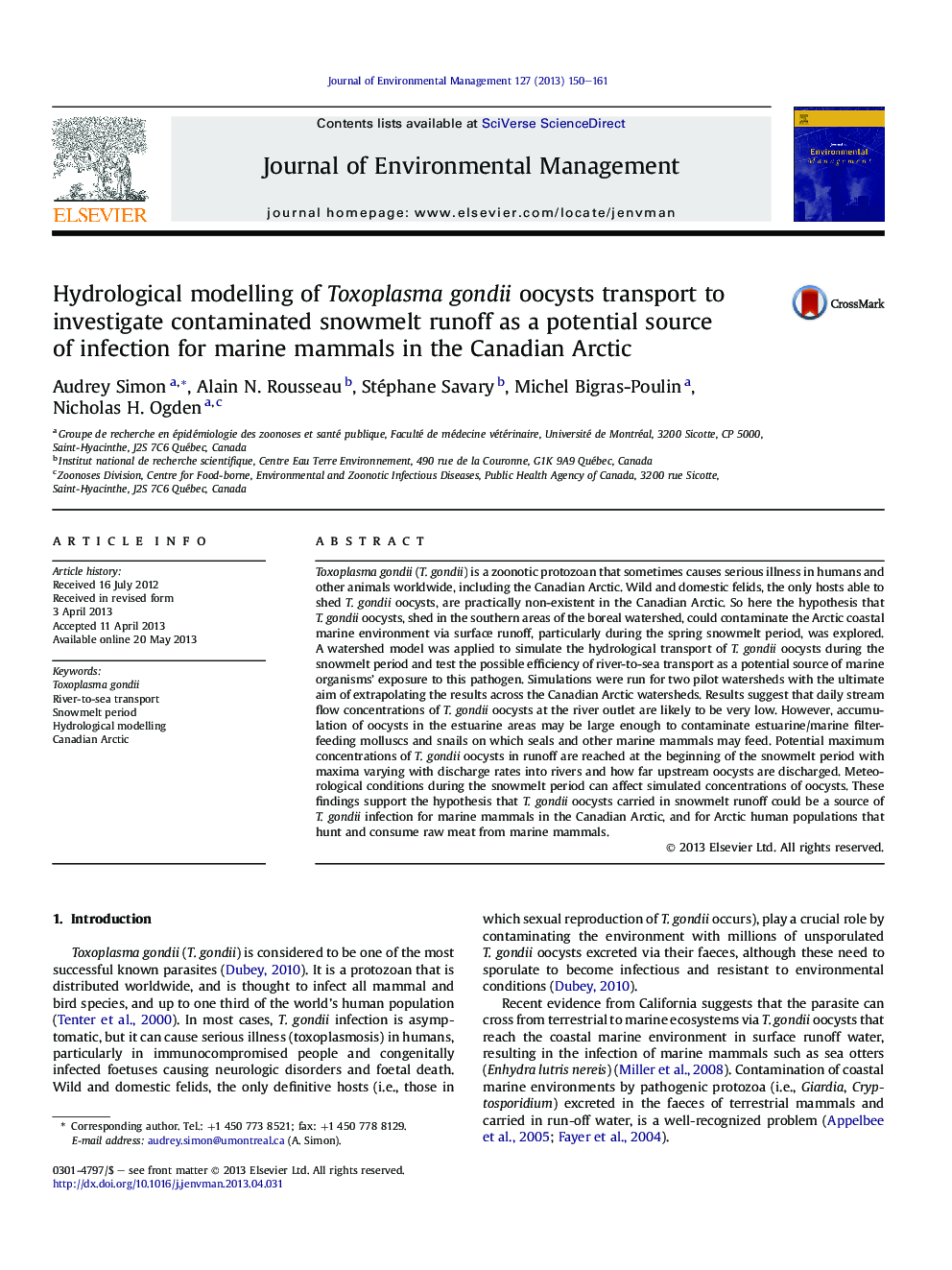| Article ID | Journal | Published Year | Pages | File Type |
|---|---|---|---|---|
| 1056017 | Journal of Environmental Management | 2013 | 12 Pages |
•For the first time, the hydrological transport of Toxoplasma gondii oocysts was modelled.•Snowmelt may allow via the food web significant exposure of marine mammals to T. gondii.•Key factors determining peaks of oocyst contamination in Arctic have been identified.
Toxoplasma gondii (T. gondii) is a zoonotic protozoan that sometimes causes serious illness in humans and other animals worldwide, including the Canadian Arctic. Wild and domestic felids, the only hosts able to shed T. gondii oocysts, are practically non-existent in the Canadian Arctic. So here the hypothesis that T. gondii oocysts, shed in the southern areas of the boreal watershed, could contaminate the Arctic coastal marine environment via surface runoff, particularly during the spring snowmelt period, was explored. A watershed model was applied to simulate the hydrological transport of T. gondii oocysts during the snowmelt period and test the possible efficiency of river-to-sea transport as a potential source of marine organisms' exposure to this pathogen. Simulations were run for two pilot watersheds with the ultimate aim of extrapolating the results across the Canadian Arctic watersheds. Results suggest that daily stream flow concentrations of T. gondii oocysts at the river outlet are likely to be very low. However, accumulation of oocysts in the estuarine areas may be large enough to contaminate estuarine/marine filter-feeding molluscs and snails on which seals and other marine mammals may feed. Potential maximum concentrations of T. gondii oocysts in runoff are reached at the beginning of the snowmelt period with maxima varying with discharge rates into rivers and how far upstream oocysts are discharged. Meteorological conditions during the snowmelt period can affect simulated concentrations of oocysts. These findings support the hypothesis that T. gondii oocysts carried in snowmelt runoff could be a source of T. gondii infection for marine mammals in the Canadian Arctic, and for Arctic human populations that hunt and consume raw meat from marine mammals.
